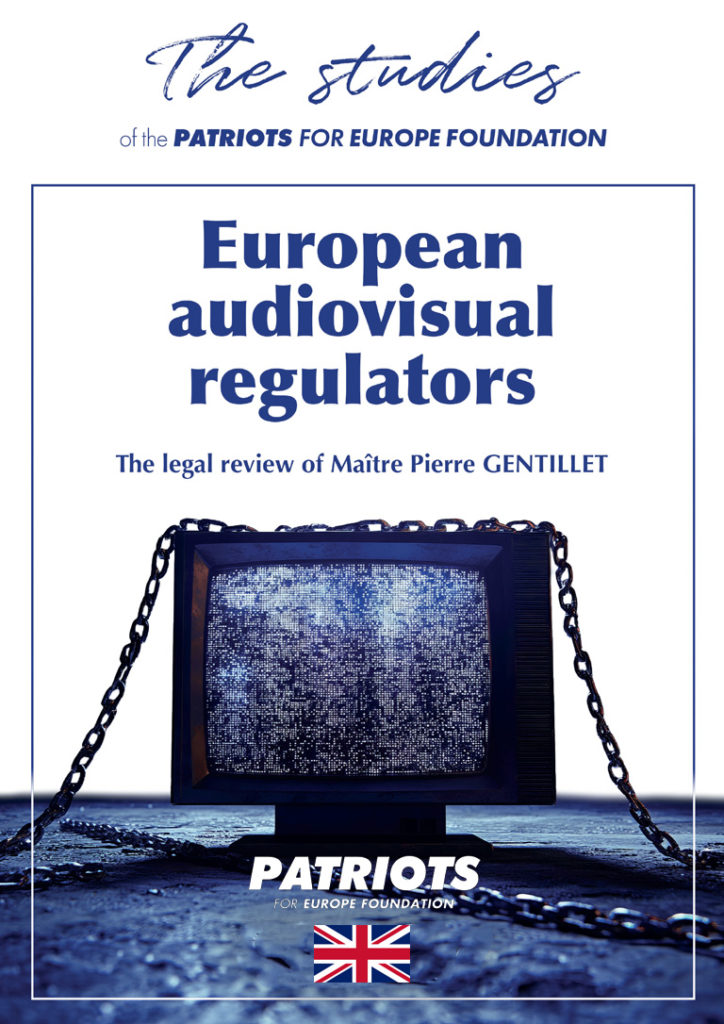European audiovisual regulators
The regulation of audiovisual media represents a significant con- temporary challenge for European democracy. The advent and propagation of broadcasting channels are subjecting extant legal standards to scrutiny, as is the augmentation of participants, to the advantage of democratic pluralism.
Nevertheless, this development requires national laws to rise to a twofold challenge: guaranteeing free access to information while safeguarding the conditions for orderly, pluralistic public debate that is not hijacked by private or foreign interests, espe- cially when the aims are clearly hostile to European democratic systems.
Therefore, audiovisual regulatory legislation remains an intensely contested and fragile area of friction between freedom of expres- sion and the protection of public order in the realm of information.
However, within the European Union, this regulation is no longer exclusively national. Since the 1990s, and even more so with the directives of 2010 and 2018, followed by Regulation (EU)2024/1083, known as the ‘European Media Freedom Act’, the European Union has gradually built a common regulatory frame- work structured around objectives that are, at least in appear- ance, those of media freedom, independence and pluralism.
In light of these developments, the 2024 regulation established a new authority: the European Board for Media Services (EBMS). However, it contains stringent and alarming provisions on tack- ling ‘disinformation’. This issue will be returned to in due course in the present study.
For several decades now, and with increasing momentum over the last ten years, European Union law has had a significant influence on national audiovisual regulations. This prompts the following question: does European media reg- ulation serve to protect pluralism, or is it instead detrimental to it? In other words, does this European regulatory convergence, based on a priori consensual principles, risk producing a veneer of pluralism, in which the most vigorous opposition, because it is ‘divisive’, is sidelined on the grounds that it contradicts the ideology at work within the European Commission?
The technical and subtle vocabulary of European law is indica- tive of a more profound political divide: that between an open- ness to public debate, allowing for dissent and political disa- greement, and a regulated and politicised approach, where diversity is accepted provided it remains compatible with the dominant norms of public discourse.
The primary concern does not lie in the presence of rules, which are indispensable for establishing a normative framework for democratic expression, but rather in their subjective interpre- tation by European bodies that lack direct democratic account- ability.
The present study aims to highlight this tension. The ambition is to present, compare, and analyse the extant regulatory frame- work and authorities within the European Union, focusing on the points of convergence and divergence, the strengths and limitations of each national model (Germany, Belgium, Italy, and Poland). This will be followed by an examination of the influence of European law in the audiovisual sector, based on the French case (ARCOM).
This approach is all the more necessary given that the Euro- pean Union, under the guise of promoting media freedom, is seeking to develop increasingly intrusive regulatory engineer- ing, where concepts such as ‘disinformation’, ‘incitement to hatred’ and ‘divisive content’ are becoming operational politi- cal categories, despite the lack of any solid definitions.
Étude publiée par la Fondation Patriots for Europe


